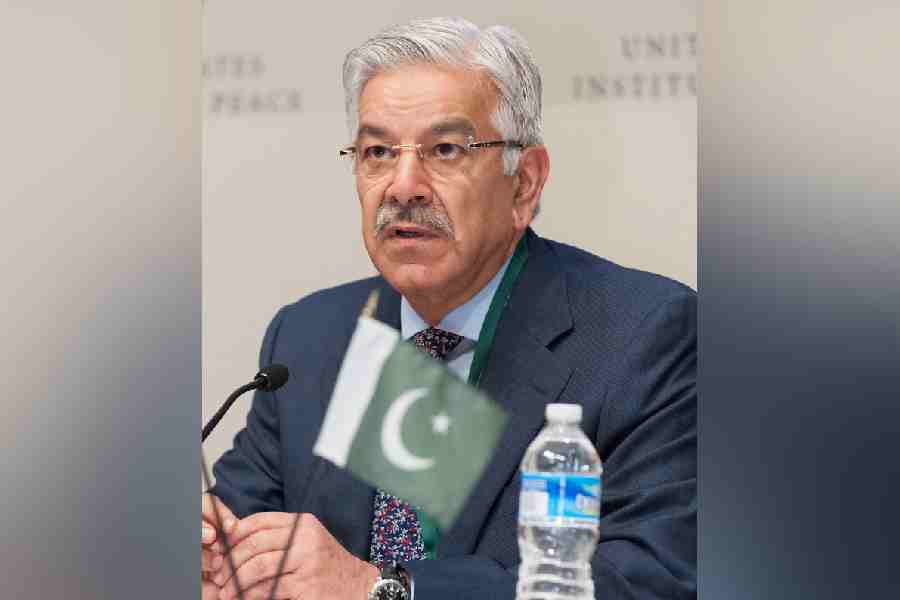.jpg) |
| Nursery of the city forest division where the staff raise saplings for their plantation needs. Telegraph picture |
Bhubaneswar, June 1: The city division of the forest department plans to create two green belts around the capital by the end of this year.
While one belt, with plantation in 24.22 hectares under the Khandagiri forest range, is already coming up at Shankarpur on the outskirts of the city near Kalinga Vihar, the other will include three patches of greeneries at different locations.
According to the forest officials, the department is readying a plan to develop plantations with 22,000 saplings in a 14-hectare area in Shankarpur, 11,000 saplings in seven hectares in Patrapada and 11,000 saplings in seven hectares at Mendhasal.
There would also be an afforestation programme of the economically important timber species with 32,000 saplings in a 20-hectare area under Mendhasal Reserve Forest.
The city forest division, as the nodal agency for the plantation programme in Bhubaneswar, was instrumental in planting 3.48 lakh trees last year. This year, the target has been set at 3.50 lakh. From last year’s plantation share, the city wing of the forest department alone planted 64,201 saplings, whereas other saplings were planted by various stakeholders in the state government and social service organisations.
Divisional forest officer (DFO) Jayanta Kumar Dash said: “With increasing urbanisation, the concrete jungles and vehicles are polluting the environment of the city. Many trees were felled in the last five years for development initiatives. The Chandaka Sanctuary is the only green patch between Cuttack and Bhubaneswar, which can provide fresh air. So two additional green belts around the city will work as a perfect carbon sink to absorb carbon-di-oxide generated due to pollution. This will also make the environment cooler as too much of carbon-di-oxide in the environment creates greenhouse effect resulting in global warming.”
According to sources in the forest department, the city forest division permitted felling of 4,065 trees during 2005 and 2010 and 1,208 trees during 2010 and 2011. Likewise, the Chandaka division has granted permission for felling 234 trees during 2007 and 2008. However, there was no tree felling between 2009 and 2010.
Though the state government has announced that the agencies responsible for felling trees for development will plant 10 times the number of the trees felled, there is also a provision to deposit the amount with the forest department to organise planned plantation activities.
“The entire area has been divided into eight sectors. All the sectors are connected to a powerful pump-set. As the saplings do not need watering on day-to-day basis, each sector is supplied with water in phases. The drip irrigation system is used to minimise the loss of water,” said in-charge of Khandagiri forest range, Ramakanta Nayak.
The Shankarpur patch is almost a year old and plantation in new patches in other locations of Kalinga Vihar and Mendhasal will be over by the end of the year. “The entire plantation area will be grown into a full-fledged forest in a decade and Kalinga Vihar will get the benefits,” said the forest ranger.
While fast-growing indigenous species are chosen for mixed plantation in the dry lands, the economic plantation in Mendhasal Reserve Forest will include teak, sisoo, bamboo and gambhar for the value of their timber.
Environment activist Bijay Mishra of Vasundhara, however, said: “There is no proper mechanism to know the exact number of trees felled by an agency and whether it has carried out the compensatory afforestation programme or not. Unless a system is developed to check the actual numbers of trees felled and then compensated, no plantation programme can be successful in the long run.”
“Apart from the forest and some related departments, other stakeholders in the administration are not worried about caring for the saplings post-plantation. So, there should be clear-cut guidelines to ensure that all saplings are planted properly and then followed by a post-plantation care programme,” Mishra added.
BMC councillor Nrupesh Kumar Nayak said: “Post-plantation programmes are important to ensure survival of the saplings. So, the stakeholders other than the forest department should take enough care to have a separate budget for that.”










